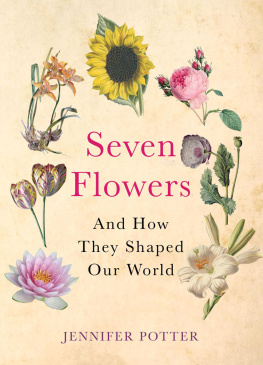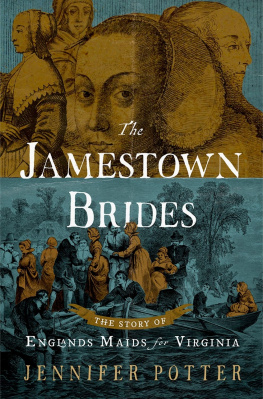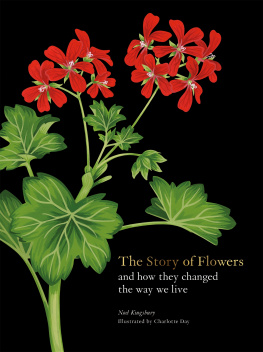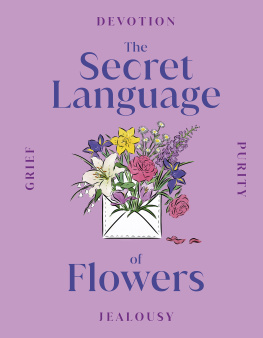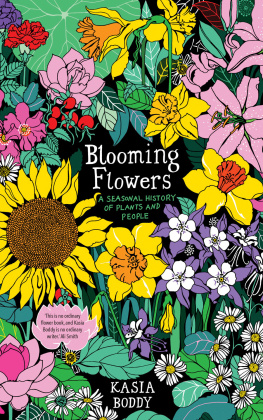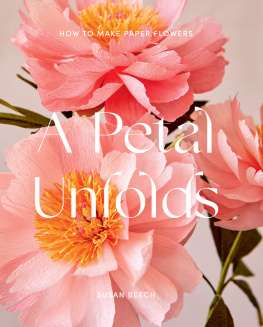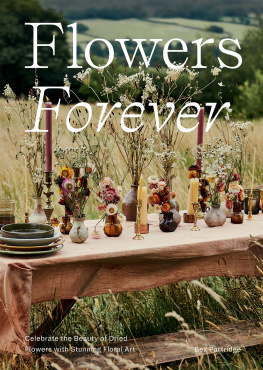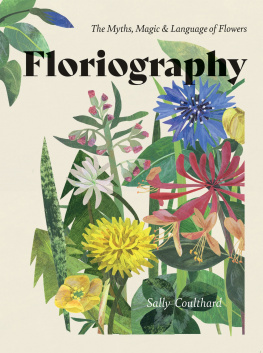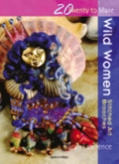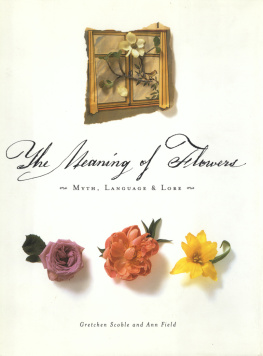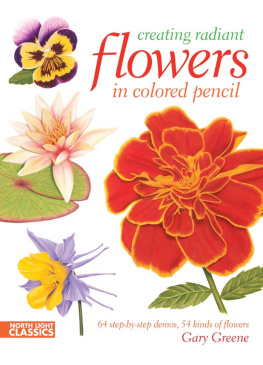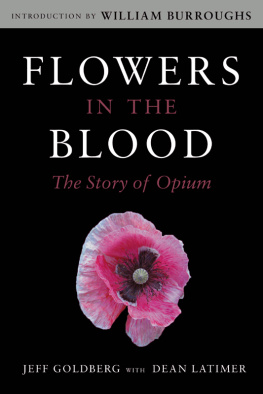Seven Flowers
ALSO BY JENNIFER POTTER
Non-fiction
The Rose: A True History
Strange Blooms: The Curious Lives and Adventures of John Tradescants
Lost Gardens
Secret Gardens
Fiction
The Angel Cantata
After Breathless
The Long Lost Journey
The Taking of Agns

Published in Great Britain in 2013 by Atlantic Books, an imprint of Atlantic Books Ltd.
Copyright Jennifer Potter, 2013
The moral right of Jennifer Potter to be identified as the author of this work has been asserted by her in accordance with the Copyright, Designs and Patents Act of 1988.
All rights reserved. No part of this publication may be reproduced, stored in a retrieval system, or transmitted in any form or by any means, electronic, mechanical, photocopying, recording, or otherwise, without the prior permission of both the copyright owner and the above publisher of this book.
The author and publisher wish to thank the following for permission to reproduce copyright material: The Big Sleep by Raymond Chandler 1939. Reprinted by kind permission of the Estate of Raymond Chandler; Approximately 6 lines (page 146) from Collected Poems 19471997 by Allen Ginsberg (Penguin Books, 2009). Copyright Allen Ginsberg, 1956, 1961. Reproduced by permission of Penguin Books Ltd; The Bitter Smell of Tulips by Zbigniew Herbert. From Still Life with a Bridle, Copyright 1993, used by permission of The Wylie Agency (UK) Limited; Approximately 60 words from Wide Sargasso Sea by Jean Rhys (First published by Andre Deutsch 1966, Penguin Books 1968, Penguin Classics 2000). Copyright Jean Rhys, 1966. Reproduced by permission of Penguin Books Ltd; Rainer Maria Rilke, excerpt from The Roses: II from The Complete French Poems of Rainer Maria Rilke, translated by A. Poulin. Translation copyright 1979, 1982, 1984, 1986 by A. Poulin Jr. Reprinted with the permission of The Permissions Company, Inc. on behalf of Graywolf Press, Minneapolis, Minnesota, www.graywolfpress.org; Rosa Sancta taken from Tender Taxes Jo Shapcott, 2001, and reprinted by permission of Faber and Faber Ltd.
Every effort has been made to trace or contact all copyright holders.
The publishers will be pleased to make good any omissions or rectify any mistakes brought to their attention at the earliest opportunity.
1 3 5 7 9 10 8 6 4 2
A CIP catalogue record for this book is available from the British Library.
Hardback ISBN: 978-0-85789-164-8
Ebook ISBN: 978-1-78239-037-4
Paperback ISBN: 978-0-85789-165-5
Set in 12/14.5pt Filosofia
Designed by Nicky Barneby @ Barneby Ltd
Printed in Great Britain.
Atlantic Books
An Imprint of Atlantic Books Ltd
Ormond House
2627 Boswell Street
London WC1N 3JZ
www.atlantic-books.co.uk
For Ros
To see a World in a Grain of Sand
And a Heaven in a Wild Flower,
Hold Infinity in the palm of your hand
And Eternity in an hour.
WILLIAM BLAKE , Auguries of Innocence
Foreword
A LL MY LIFE , flowers have been creeping up on me.
My early childhood was oddly flower-free, aside from memories of threading daisy chains in the Silverdale garden of my maternal grandfather, and the lemony sweetness of Philadelphus flowers pinned to the fairy costume I wore to a local show. The flowers of Malaya, where we moved when I was eight, naturally came as a shock: frangipani, flaming cannas, hibiscus, the night-blooming Keng-hwa cactus, Spider orchids and Flame of the forest trees. These were flowers bold as brass but I took them entirely for granted. They were simply there, part of the given, like the bad-feet smell of the durian fruit and the flickering lights of the Hindu Diwali festival; I cannot claim foreknowledge of the way flowers would come to govern my life.
Returning to the English Lake District, I began to pay flowers more attention. My mother had turned into an assiduous gardener, determined to reclaim a derelict garden high above the town of Ambleside, on a hillside that had also sheltered the migr artist Kurt Schwitters at the end of the war. Springtime is the time I remember best, when the garden filled with the flowers that still remind me of my Cumbrian home: tiny wild daffodils, Himalayan rhododendrons and, in late summer, banks of the saffron-coloured South African import montbretia (Crocosmia), which have escaped into the wild.
Everything changed when I went to university in the late sixties. Flowers became my emblem and the power of flowers my mantra. Like many of my contemporaries, I was drawn to eastern religions, and after graduating travelled westwards around the world, paying an obligatory visit to Haight Ashbury in San Francisco, which still functioned as the faintly beating heart of the Flower Power generation. While I never wore flowers in my hair, I slept on somebodys floor, ate a macrobiotic diet of brown rice and adzuki beans, and imagined like everyone else that I was changing the world. It is easy with hindsight to deride such facile optimism, but the flowers we embraced represented a sincerely held belief that peace would prevail if we could only disinherit the past, counter guns with guerrilla theatre and let a thousand flowers bloom.
Ten years after leaving university, I acquired a garden of my own. Seeking refuge above all, I created a lushly green urban jungle where I could pretend to be somewhere else and where the sole flowers I allowed were white lilies and tobacco plants, because of their heavenly fragrance after dark. The space was small, no more than ten metres by ten, and its illusion of other worlds persisted until a neighbour chopped through the stems of my rampant Russian vine, exposing the fragility of my gimcrack Eden.
After jungles, my interest turned to landscapes, imaginatively recreated in fiction and later studied at Londons Architectural Association, then to books about gardens, secret and lost. These were followed by a biography of Britains first celebrity gardeners and plantsmen, the John Tradescants, and most recently a cultural history of the rose, which re minded me once again of the power of flowers to express our inner selves.
For five long years I tracked the roses evolution as a flower and as an idea, struck by how central it has been to so many cultures around the world. My conclusions were disarmingly simple: that who you are dictates how you see the rose; and that each age and each society has reinvented the rose in its own image. Through the rose we tell our stories, both personal and collective, and I wondered: if the rose can do this, what about other flowers? Can they also tell us something about who we are and where we have come from? Can they codify our aspirations, help to diffuse our fears? Can they speak to us, in other words, about things other than themselves?
Out of such questions came this book. While it cannot emulate TheRoses breadth of enquiry undertaken for a single flower, it uses the same approach to interrogate seven flowers that have exerted power or influence of one kind or another, whether religious, spiritual, political, social, economic, aesthetic or pharmacological. I have chosen my flowers carefully; they are the lotus, lily, sunflower, opium poppy, rose, tulip and the orchid. Each has shaped our lives in some way, for better or worse, and each has some connection with my life, from the stylized lotuses of a Tibetan monastery in the Scottish Borders to the Spider orchids of a tropical childhood. I want to know where my flowers originated, when and how they gained their powers, what use men made of them in gardens, and how or more truly why their powers transmuted into art.

